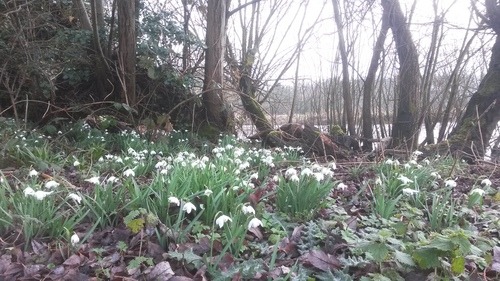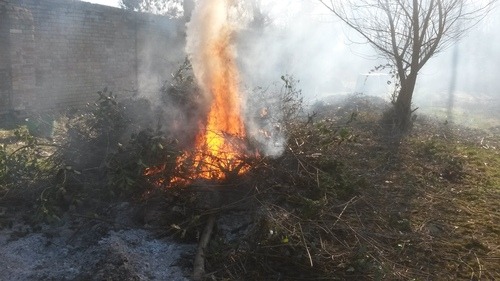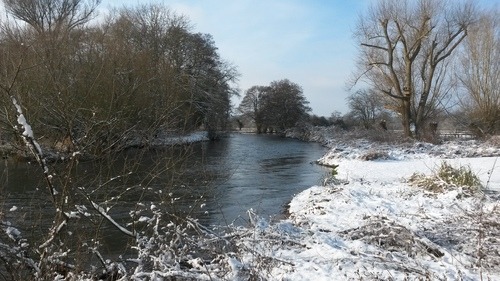First of all, dear readers, a picture of the ‘Shade Garden’ I planted a couple of weeks ago at The Almshouses.
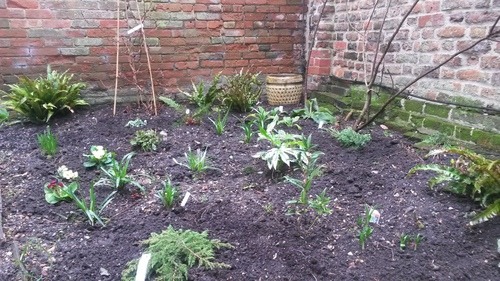
I am not entirely persuaded by the prostrate Junipers, or the Polyanthus, but the client’s wish is my command. The pots (there are two of them) are nice though.
At The Farm I was planting the native, wildlife-friendly hedge for which I had prepared the ground last week. When I looked at it again, the trench was not only uneven, but too narrow. So my first task was to widen and straighten. Then came the planting. A healthy bundle of bare-root trees from the estimable Landford Trees consisted of Hawthorn, Field Maple, Blackthorn, Viburnum opulus and V. lantana. All of these are found in ‘wild’ hedges hereabouts, and will provide both cover and food for insects and birds in due course. I put ‘wild’ in inverted commas, as no hedge is truly wild – the very notion of hedges is a human one, inextricably linked to farming and the enclosure of stock and pasture.
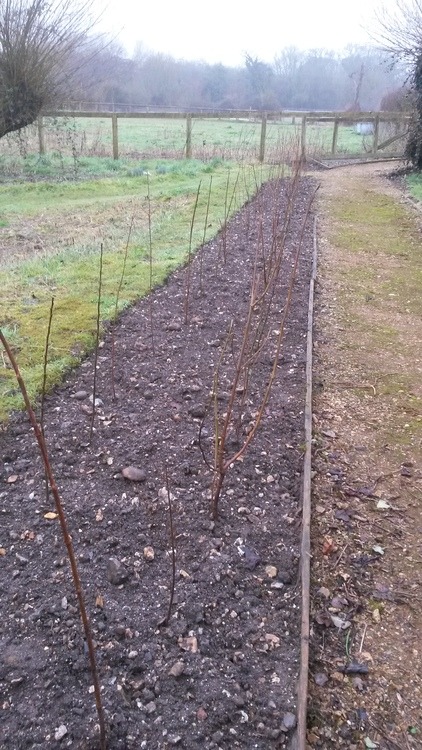
As I said previously, the intention is to steer people along the path, towards the ‘proper’ garden gate, and to screen the ‘working’ area (to the left of the hedge in the picture). There were a good handful of saplings left over, so I made a ‘stock bed’ down by the compost heaps and heeled them in there. They will come in useful if there are any casualties in the hedge, or may end up somewhere else as a hedge in their own right.
Another job last week was pruning the bed of Cornus. I am going to try two approaches, to see which generates better results for winter colour. Those I have already done have been more or less pruned hard down to their base:
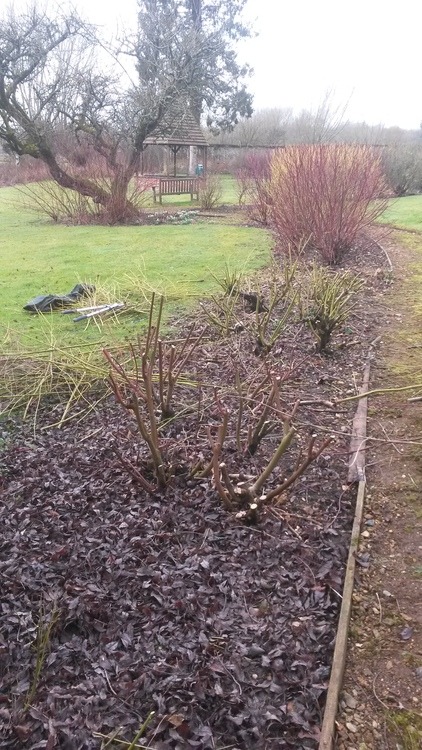
The others, which I will do next week, will be pruned according to Dan Pearson’s recommendation – in the Observer – to keep the structure and remove a third of the stems (as one would do to rejuvenate many shrubs).
These shrubs – Cornus and, more particularly, others in these borders – which need winter pruning will have to be done soon, as birds are already starting to prospect for nest sites. I saw a Long Tailed Tit with a beakful of nesting material the other day, and judging by the old nests I have found when pruning, they love this part of the garden. A Long Tailed Tit’s nest – a beautiful soft ball of moss and feathers – is a wonderful thing.
I also did some ‘thrashing’ (there is no better word for it) of dead nettle stems which were hiding some of the lovely snowdrops in the Walled Garden. I have transplanted a few clumps which were isolated and totally lost in the long grass, and put them in the main border, but most of the naturalised snowdrops I’ve left in situ.
